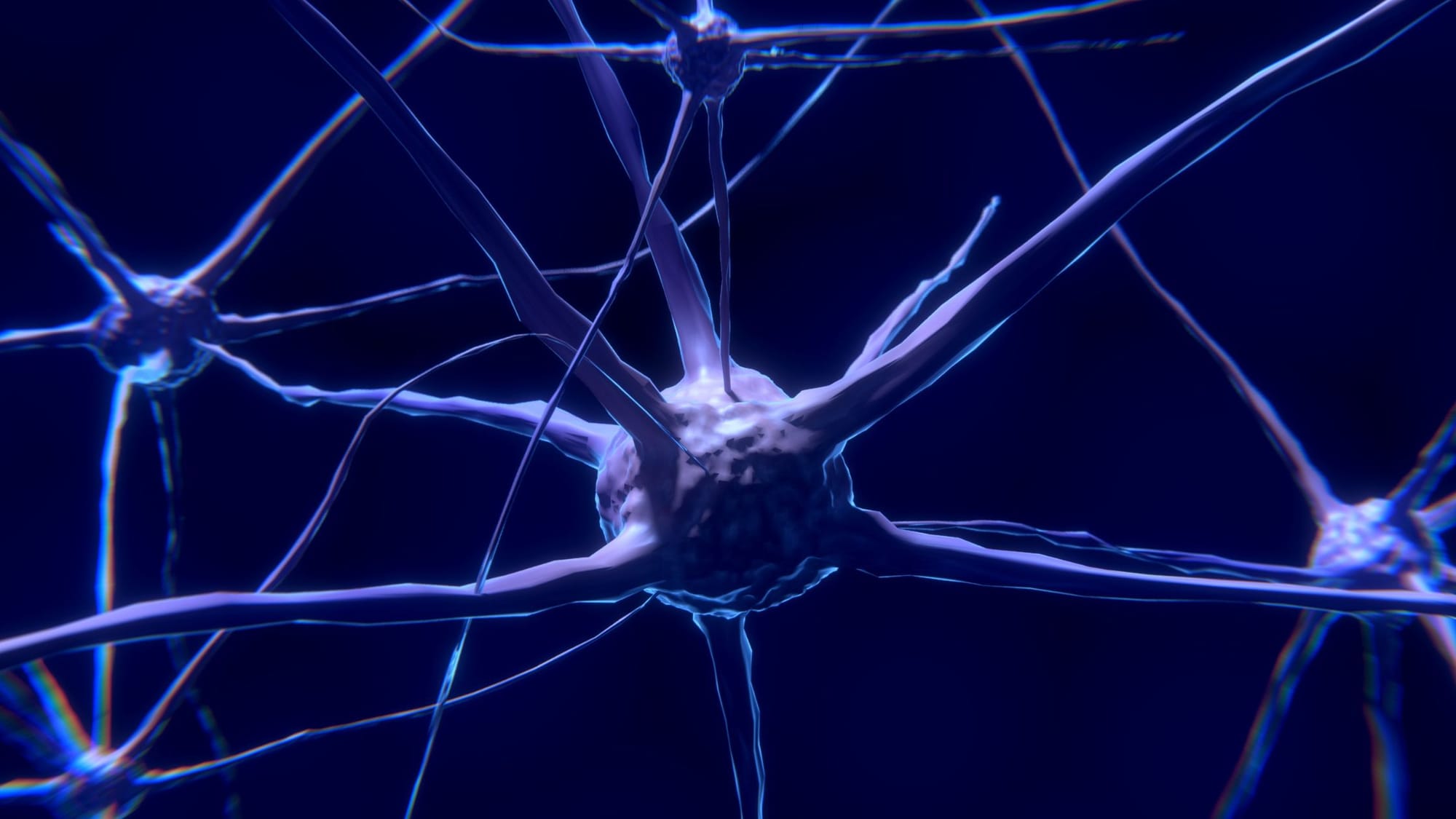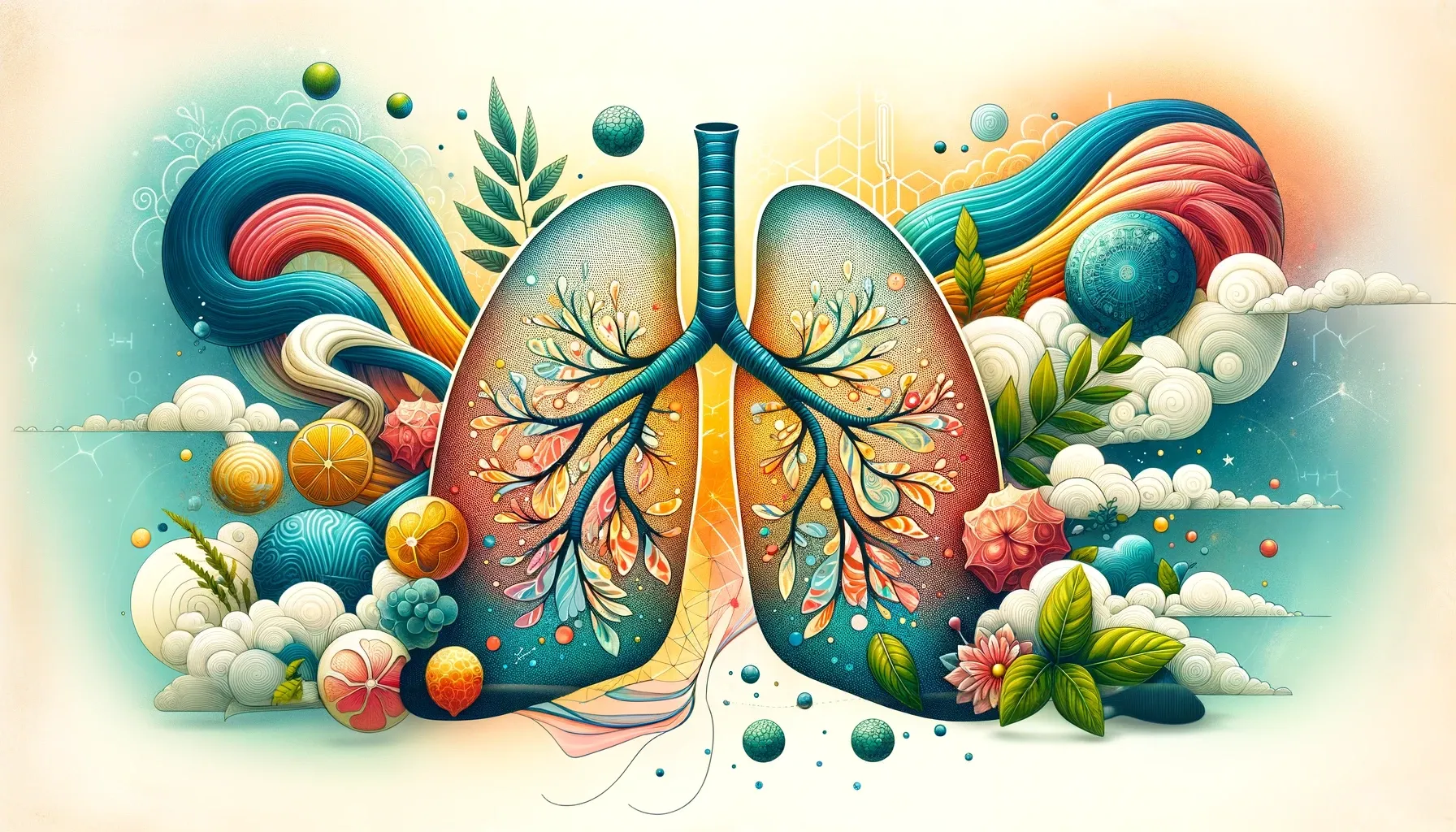German New Medicine 101: Brain, Migraines, And Headaches [Part 16]
In this part of our German New Medicine series, we'll talk about GNM migraine and headaches, from underlying conflicts to holistic solutions!

German New Medicine (GNM) is a different way of looking at health problems, created by Dr. Ryke Geerd Hamer. It suggests that when we get sick with things like headaches or migraines, it's not just random; it's our body's way of responding to emotional conflicts.
GNM focuses a lot on the brain and how it deals with these emotional conflicts. One key player in this process is the pituitary gland, which is often called the "master gland" because it controls many important hormones in our body. According to GNM, issues with this gland can lead to headaches or migraines.
In this post, we'll explore how GNM thinks about headaches and migraines, especially looking at the role of the pituitary gland.
Table of Contents
1. The Brain in GNM Perspective
2. How The Brain Interacts With Other Systems Of The Body
3. GNM Migraine and Headache
4. Biological Conflicts In Brain Areas
5. Emotional Conflicts Related To Migraines And Headaches
6. Conflict-Active Phase And Healing Phase
7. The Healing Process In GNM
8. Natural Remedies And Tips For Managing Migraines And Headaches
Final Thoughts
1. The Brain In GNM Perspective
The brain in German New Medicine is considered the central control system of the body, coordinating all biological processes and responses. According to GNM, every disease, including psychological and physical disorders, originates from a shock or trauma that catches you completely by surprise.
This unexpected shock affects the brain at a specific, predictable location, which corresponds directly to the specific organ or body part that exhibits symptoms.
Dr. Ryke Geerd Hamer, the founder of GNM, introduced the concept of the "brain relay," which highlights the brain’s role in connecting emotional traumas to physical responses. The brain scans in GNM practice reveal these impacts as sharp concentric rings, known as Hamer Focus, indicating the exact location of the trauma in the brain and its linked organ.
Understanding the brain's function within this framework is crucial because it helps identify the origin of diseases and guides the pathway for healing by resolving the underlying conflict.
2. How The Brain Interacts With Other Systems Of The Body

In GNM, the brain’s interaction with the body is governed by what Dr. Hamer called the "Five Biological Laws." These laws describe the nature of diseases as meaningful biological processes that are initiated by the brain in response to conflicts:
1. The Iron Rule of Cancer:
The first law states that every disease (not just cancer) begins with a Dirk Hamer Syndrome (DHS), which is a serious, acute-dramatic, and isolating conflict-shock experience. The type of conflict determines the location in the brain affected and subsequently the organ involved.
2. The Law of Two Phases:
According to the second law, every disease progresses in two phases: the conflict-active phase and the resolution phase (healing phase), provided the underlying conflict is resolved. During the conflict-active phase, the sympathetic nervous system dominates, leading to symptoms like cold hands, lack of appetite, and insomnia.
Once the conflict is resolved, the body enters the parasympathetic-dominant healing phase, characterized by fatigue, fever, inflammation, and increased appetite.
3. The Ontogenetic System of Tumors:
The third law links the development of tumors and other growths to the brain layer from which they originate, based on embryonic development. This law explains the type of cell growth or necrosis occurring in the organ based on the brain layer affected (endoderm, mesoderm, or ectoderm).
4. The Ontogenetic System of Microbes:
The fourth law states that microbes such as bacteria, fungi, and viruses are involved in the healing phase under the brain's control. The type of microbe is also determined by the brain layer associated with the affected organ. For instance, bacteria break down tumor cells that were useful during the conflict-active phase but are no longer needed.
5. The Quintessence:
The fifth law is a summary statement emphasizing that diseases are not, as traditionally thought, malfunctions or errors of nature but meaningful biological response programs designed to deal with unexpected emotional distress.
These principles illustrate the sophisticated interaction between the brain and the rest of the body in GNM, portraying the brain not just as a regulatory organ but as an interpreter and responder to life's distressing events, orchestrating both the onset and healing of diseases in a biologically predictable and purposeful way.
Read Also:

3. German New Medicine (GNM) Migraine and Headache
In German New Medicine, migraines and headaches are seen not merely as isolated symptoms or disorders but as manifestations of deeper biological conflicts or shocks that the brain is attempting to process.
According to GNM, every symptom in the body, including headaches and migraines, has a distinct biological purpose linked to an unresolved emotional conflict. The type of headache or migraine, its location, and the severity are all indicators of the specific nature of the emotional distress experienced by the person.
Emotional Conflicts Associated With Migraines and Headaches
The nature of the conflict associated with migraines and headaches can vary, but they typically relate to conflicts of a territorial or separation nature, or what GNM terms as "intellectual conflicts."
Here are some specific examples:
- Territorial Conflicts: These conflicts are often about boundary disputes, either metaphorically or literally. For instance, issues at work where one feels their authority is being undermined can trigger such a conflict, leading to headaches.
- Separation Conflicts: These arise from feeling separated from a loved one or a cherished environment. The perceived loss triggers pain in the part of the body that last had contact, which can manifest as headaches if the conflict involves the head or sensory organs.
- Intellectual Conflicts: These conflicts are related to something that "can't be accepted" or "can't be digested intellectually." It might involve a situation where someone can't come to terms with something they have seen or heard.
Read Also:

4. Biological Conflicts In Brain Areas
In German New Medicine (GNM), specific brain areas are correlated with particular types of biological conflicts, based on Dr. Ryke Geerd Hamer's mapping of the brain.
The brain relays associated with these areas directly influence corresponding organs or regions of the body.
Here are details for key brain areas related to common conflicts:
- Pituitary Gland: Located at the base of the brain, the pituitary gland is often involved in conflicts related to growth and reproduction issues, which can influence stress responses potentially contributing to migraines.
The biological conflicts linked to the adenohypophysis (anterior pituitary) can include "starvation conflicts" or feelings of inadequacy, which might translate physically into issues like migraines when the body is in a state of alertness or trying to resolve these conflicts. - Pineal Gland: Known as the regulator of circadian rhythms through its production of melatonin, the pineal gland is implicated in conflicts related to light, such as "fear of darkness" or "fear of the light."
These types of conflicts might lead to disturbances in sleep-wake cycles, which are a known trigger for migraines.
5. Emotional Conflicts Related To Migraines And Headaches

Fear of Losing Control:
This type of conflict can be particularly related to the function of the cerebral cortex, which governs higher executive functions such as decision-making and regulation of social behavior.
When someone fears losing control, it can trigger a hyperalert state in the cortex that leads to migraines as a form of over-stimulation or excessive neuronal activity.
Intellectual Self-Devaluation:
In GNM, conflicts involving self-devaluation often affect the bones or the muscles, but when the conflict is specifically about intellectual ability, it can also affect the brain areas that are responsible for cognitive processes.
People experiencing this conflict may suffer from headaches that are linked to intense mental exertion or feelings of inadequacy in their intellectual capacities.
Read Also:

6. Conflict-Active Phase And Healing Phase
Conflict-Active Phase
During the conflict-active phase, you may experience intense migraines or headaches as the brain sends increased electrical activity to the affected area.
This phase is characterized by the sympathetic nervous system's dominance, often accompanied by stress, anxiety, and sleep disturbances. The intensity of the headache or migraine during this phase is directly proportional to the intensity of the unresolved conflict.
Healing Phase
Once the conflict is resolved, the body enters the healing phase, where the parasympathetic nervous system becomes dominant. This phase is marked by the body attempting to repair the damage caused during the conflict-active phase.
In terms of headaches and migraines, this might mean a reduction in pain intensity, but it could also involve temporary worsening of symptoms as the body goes through the healing process.
This phase can also include edema formation in the brain, which can increase the pressure and thus the headache. However, this is a part of the normal healing process and should decrease as the healing progresses.
Special Note on Healing
In some cases, if the conflict relapses occur, it might lead to a cyclical pattern where the symptoms come and go in waves. This is often seen in chronic migraine sufferers who experience triggers that reactivate the original conflict.
7. The Healing Process In GNM

In GNM, the healing phase is initiated once the underlying biological conflict has been resolved. For conditions such as migraines and headaches, this phase is critical and can manifest in various ways depending on the nature of the conflict and the brain areas involved:
- Symptom Intensification:
Initially, during the healing phase, symptoms such as migraines might temporarily worsen. This phenomenon, known as a healing crisis, is considered a positive sign that the body is actively resolving the conflict.
For example, the increased blood flow to the previously affected brain areas might result in more severe headaches or even a different type of headache than typically experienced. - Edema Formation:
The healing phase often involves the development of edema in the brain area that corresponds to the conflict. This swelling is part of the body’s process of repairing the tissues.
In the context of migraines and headaches, the edema can increase intracranial pressure, which might temporarily exacerbate the headache symptoms. - Reparative Processes:
As the healing progresses, the body works to restore normal function in the affected brain areas. This includes the reduction of edema and the repair of neuronal pathways that were altered during the conflict-active phase.
Over time, this leads to a decrease in the frequency and intensity of migraines and headaches.
Read Also:

7.1. Role Of The Brain In Facilitating Healing And Recovery
The brain plays a central role in both the detection and resolution of conflicts according to GNM. Here’s how it facilitates healing and recovery:
- Regulation of Healing Responses: The brain regulates the biological responses necessary for healing, including hormonal changes, modulation of immune responses, and neurological adjustments needed to return to homeostasis.
- Neuroplasticity: During the healing phase, the brain's ability to adapt and reorganize itself is crucial. Neuroplastic changes help in rewiring the neural circuits that were impacted by the conflict, aiding in the reduction of symptoms and improvement in overall brain function.
- Coordination with Other Systems: The brain coordinates with other systems of the body to ensure that the healing responses are holistic. This includes adjusting sleep patterns, immune system activity, and endocrine system outputs to support recovery.
7.2. Resolving The Underlying Emotional Conflict To Alleviate Symptoms
Resolving the underlying emotional conflict is the cornerstone of the healing process in GNM for several reasons:
- Direct Impact on Symptoms: Directly addressing and resolving the conflict leads to a cessation of the conflict-active phase and the beginning of the healing phase. For migraines and headaches, this means that once the emotional disturbance is addressed, the physiological triggers for these symptoms can be deactivated, leading to relief.
- Preventing Recurrence: Without resolving the underlying conflict, you may experience recurrent episodes of migraines or headaches. Each recurrence can potentially lead to more severe symptoms or chronic conditions as the brain and body reactivate the conflict-response cycle.
- Holistic Health Improvement: Resolving emotional conflicts not only addresses the immediate symptoms but also contributes to long-term health and well-being. Emotional resolution often requires changes in perception, behavior, and environment, which can lead to a more balanced and healthy lifestyle.
8. Natural Remedies And Tips For Managing Migraines And Headaches

In the context of German New Medicine (GNM), managing migraines and headaches goes beyond treating physical symptoms; it involves addressing the underlying emotional conflicts and making holistic lifestyle adjustments.
Here are some natural remedies and tips that align with GNM principles:
8.1. Natural Remedies
Essential Oils: Aromatherapy can be soothing and help manage the pain associated with migraines and headaches. Peppermint oil, for example, is known for its cooling and analgesic properties, while lavender oil is praised for its stress-relieving effects.
Herbal Teas: Herbs like feverfew and ginger have been used traditionally to reduce migraine symptoms. Feverfew is known to help prevent the onset of migraines, while ginger can alleviate nausea associated with migraines.
Magnesium Supplements: Magnesium deficiency is often linked with headaches and migraines. Taking magnesium supplements or consuming magnesium-rich foods like almonds, spinach, and bananas can help reduce the frequency of migraines.
Hydration: Staying adequately hydrated is crucial. Dehydration is a common trigger for headaches and migraines. Ensuring regular intake of water can help prevent the onset of headaches.
Heat or Cold Therapy: Applying a warm compress or heating pad to the neck and shoulders can help reduce muscle tension and headache pain. Alternatively, a cold pack on the forehead may relieve migraine pain for some people.
8.2. Lifestyle Changes and Practices
Regular Sleep Patterns: Maintaining a consistent sleep schedule is crucial. Sleep disturbances are common triggers for migraines and headaches, so getting enough restorative sleep is important.
Stress Management Techniques: Techniques such as yoga, meditation, and deep-breathing exercises can reduce stress levels, which in turn can decrease the frequency and severity of migraines and headaches.
Physical Activity: Regular moderate exercise can improve overall health and reduce stress, which might help decrease the frequency of migraines. However, it's important to avoid excessive exercise, which can itself trigger migraines.
Balanced Diet: Avoiding foods that trigger migraines (like red wine, chocolate, aged cheeses, and processed meats) and incorporating a balanced diet with plenty of fruits, vegetables, and whole grains can help manage symptoms.
Journaling: Keeping a headache diary can help identify specific triggers and emotional circumstances that precede the onset of migraines and headaches, aiding in conflict resolution.
Read Also:

8.3. Understanding and Addressing the Emotional Roots
Identifying Emotional Conflicts: Understanding the specific emotional conflicts related to migraines, such as feelings of intellectual failure or territorial disputes, is crucial. Identifying and acknowledging these conflicts is the first step toward resolution.
Emotional Release Practices: Engaging in practices that facilitate emotional expression and release, such as art therapy, somatic therapy, emotional freedom technique (EFT), or GNM therapy sessions, can be beneficial. These practices help process and resolve the conflicts that may be manifesting as physical symptoms.
Educational Empowerment: Learning more about how emotional health impacts physical symptoms according to GNM principles can empower you to take a proactive role in managing your health. This might involve reading, attending workshops, or consulting with GNM practitioners.
Final Thoughts
In German New Medicine, migraines and headaches are not merely physical ailments but manifestations of deeper unresolved emotional conflicts. By addressing these conflicts and integrating natural remedies and lifestyle changes, you can find more than just symptomatic relief—you can achieve deeper healing and improved overall well-being.
Become a Sista and follow us on Instagram, subscribe to our YouTube channel, and tune into our podcasts on Spotify!


